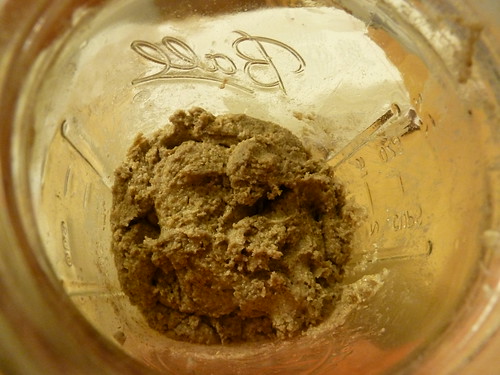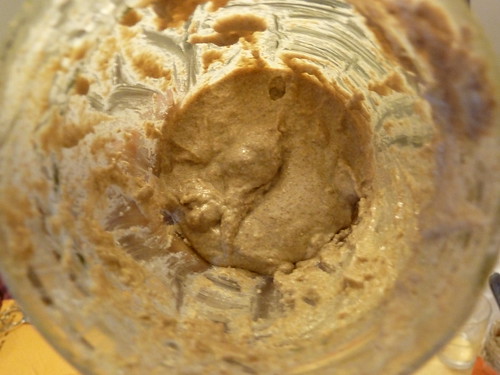I apologize for the 2 week hiatus. I got involved in something that took my time away and consumed my attention - making a rye starter!
Let me first backtrack on how this started. Those of you who know me knows (and are probably tired of hearing about) how I fell in love with bread when I was in Germany. Before then, bread was fine, I liked eating sweet breads for snacks, but I thought it was a poor substitute for rice or pasta/noodle during meals. I used to know an Austrian hiker, who sniffed his nose up at American bread. I thought it was just a general European disdain for American mass-produced foods. As it turned out, he had a very good point when it comes to bread.
After I got into a baking frenzy last week, I decided to go check out the public library for bread books. I decided that I wanted to learn to bake multi-grain breads, which for me has a much more interesting texture than white breads. Skimming through the shelves, I saw a book that has been mentioned by several posters at The Fresh Loaf, Local Breads by Daniel Leader. I flipped through the pages, saw tons of Italian breads and French baguettes - white breads, and was about to put the book down, when I saw that the book had a section on German rye breads. I was sold.
Funnily, when I first started baking I was just going to learn basic sandwich bread, and at some point during decision making, I concluded that there was no reason spending time baking what I didn't enjoy eating, so decided to go for whole wheat despite the trickier dough handling. And with Leader's book triggering memory of those fond days at the German bakery, I decided to take the plunge and make rye sourdough. Not the steps most beginners would take, but I have accepted that I am a hopeless foodie.
The making of the starter was pretty easy: just some rye flour (which was actually quite some work to obtain), and water. That's it.
Day 1: mix 1/2 cup of rye flour + 1/4 cup of room temp (75F) water. At this point the thing look like clay.
Day 2: add 1/2 cup of rye flour + 1/4 cup room temp. water. The starter is stiff but has slightly more doughy feel to it.
From the side you can see the bubbles indicative of fermentation:
Day 3: Add 1/2 cup of rye flour + 1/4 cup warm (90F) water. This is where I messed up - I added room temperature water as I didn't read the instructions carefully - but I didn't realize this until 2 days later. You can see that the starter becoming more doughy, and there are now bubbles as sign of fermentation. Starter is beginning to start to smell like - per Dan Leader - "rotten fall leaves and fermented apples."
Day 4: To test whether the starter is ready, I added 1/2 cup of rye flour + 1/2 cup of warm water and see if it doubles in size in 12 hours. It did not. *Belatedly realize my mistake on day 3*
Day 5: Starter still not doubled. I am thinking I've killed the starter. My roommate Jamie suggests that I move the starter to a warmer area since our apartment seems to be underheated. I moved it near the radiator.
Day 6. Success!! Starter have doubled with lots of bubbles when viewed from the side. It smells just right too. I scooped out ~1/4 cup of the starter, fed it 1/2 cup of rye flour + 1/2 cup of warm water, and set it near the radiator, in preparation for my very first rye bread making.
The just-refreshed starter has a more liquid appearance liquid and almost resembles batter:
While most instructions will say to discard the rest of the starter, I felt that was a waste (rye flour is expensive!), so I gave out starter to friends who wanted it. The rest, I refreshed it again, and store it in the fridge for future use. Which means that there will soon be more posts featuring sourdough starter!
Next, my very first rye bread, alpine baguettes.







